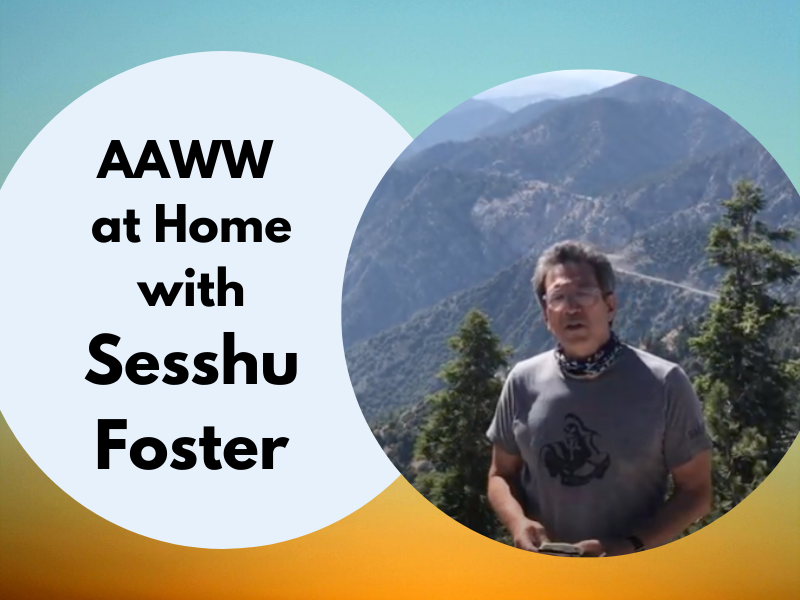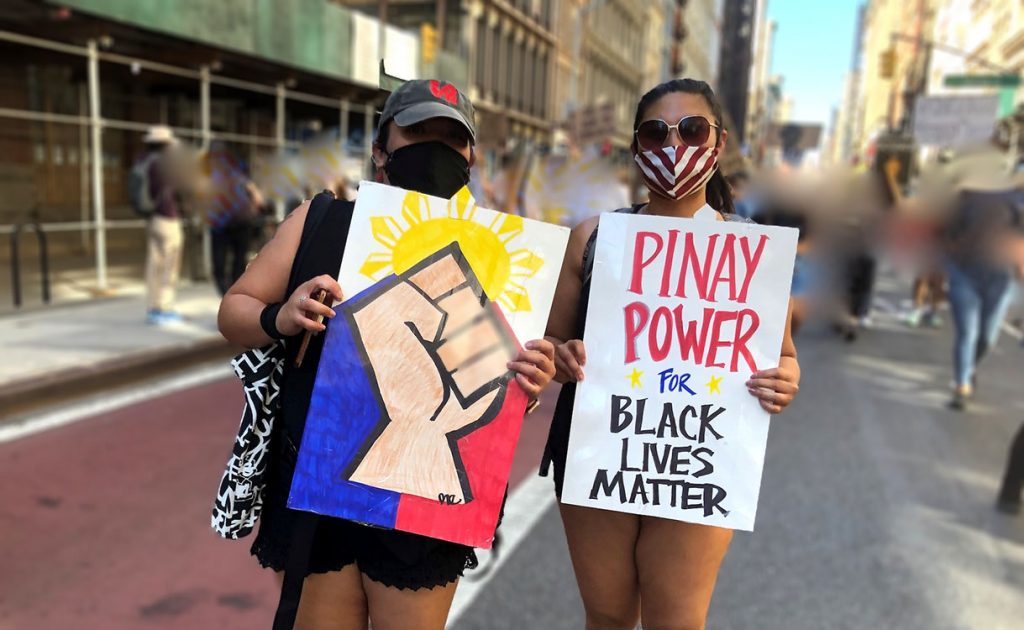The author of City of the Future on looking back at L.A. in the 1960s and 70s and the poems of Angel Dominguez

August 14, 2020
Since early on in the pandemic, AAWW at Home began connecting our readers to some of the writers we love most, from the comfort of their homes.
This week, we hear from East L.A. writer Sesshu Foster, who recorded in part atop Mount Islip in the San Gabriel Mountains. Foster has taught composition and literature for thirty-five years. His recent books include City of the Future (Kaya Press, 2018), winner of the CLMP Firecracker Award and ELADATL: A History of the East Los Angeles Dirigible Air Transport Lines (City Lights Publishers, forthcoming 2021), a novel co-written with artist Arturo E. Romo.
The following is a transcript of the video above.
Hi, I’m Sesshu Foster. We’re at 8,250 feet up here on Mount Islip in the San Gabriel Mountains. What is it, Sunday afternoon. It’s about 90 or 100 degrees in LA, so we came up to the top of this mountain.
I’ve been reading a great book — I’ve been reading the Verso edition of Set the Night on Fire: LA in the 1960s by Mike Davis and John Weiner. The book goes through the movements that were happening in LA in the 60s from the anti-war movement to the Black Panthers and the Brown Berets, the East LA walkouts, and it ends with Gidra publication, a newspaper published by the Asian American movement by some students that came out of UCLA. My first poems were published in Gidra in about 1973. That was a really long time ago. And it seemed like in those days, you know, with the draft and the Vietnam War, 58,000 US troops killed in Vietnam, and millions of Vietnamese killed, that maybe a lot of us weren’t going to live that long. Obviously, it’s been a long time since then.
So I’m supposed to think of a couple hopeful things to say to maybe younger writers or writers who are up and coming. What do I have to say… well obviously things are hard. But if you have as many people out in the streets as Black Lives Matter was able to bring out, you know that’s a hopeful sign. They totally changed the dialogue around police brutality, from prevent police brutality to defund police and switch over the funding to something that improves the actual lives of communities.
My students are going forward. It’s like this, my students gave me this [holds up water bottle with the word “Whatever” printed on it]. And it’s just like, whatever. Bring it on, whatever. They will get through it. Yea.
Angel Dominguez was a student in my poetry class at UC Santa Cruz about nine years ago. He has a book coming out on Operating Systems Press in November called RoseSunWater. Angel’s family comes from Yucatan and he grew up in the San Fernando Valley in L.A.. He returns to Yucatan in this book and uses the figure of the vanquished home, the demolished home that he once lived in in the San Fernando Valley, as a figure to stand in for memory, as metonymous with memory. And he does some great work with the figures of spirals and the figure of the house. And I’m going to read a couple short sections from the book. I found the book of great interest. It teaches me about not only about gentrification in the physical sense, the sense that we’re all dealing with in terms of inflating costs of surviving. But also in the spiritual sense, the kind of gentrification of the spirit that requires us always to continually be moving, always to be self-improving, always to be getting degrees, basically in order to stay afloat and survive.
From RoseSunWater by Angel Dominguez:
The chaya emerges to nourish the keeper de la huerta antes que the house dissolves. The somnambulist calls the home an orchard because the trees allowed them to blossom and become this after-image beyond the city. The city becomes something else around the orchard. The city begins to punch holes in everyone’s memory, demanding the inhabitants adapt to the ongoing invasion of everywhere else wanting to be where they are not. A sickness that spread to the somnambulist. The hunger for departure; thirsty for the transit fix. All of it imaginary. None of it real. The veins of light that become asphalt by day were a kind of comfort, now grown strange. The truth is a spiral, an ongoing descent through cycles. Each return to origin allows for a further vertical distance in memory. I sew this now to yours as you read this and we become cross-stitched and bound to one another. The city continues humming within the body despite all the silence surrounding the somnambulist. Our blood is always buzzing.
I build a house in the dead-end housing complex of my heart. The rent is cheap enough to live and every tenant is on a second chance account of some kind, my heart included.
I keep trying to build the square footage into my organs. I keep trying to form a floor plan out of memory, every time I touched my hands to those walls; feet to the floors. I am trying to remember a feeling beyond the ruin to come. There will be no pyramid. There will be no archive. Our home will become the shape of an overpriced future I can’t afford. I hope every tenant’s aguacates rot before they can use them.
I build a roof above a dream I’ve yet to have. The empty chairs manifest spirits and ancestors and we’re all moving out of here before it’s too late.
RoseSunWater will be published by The Operating System in Fall 2020: http://www.theoperatingsystem.org/product/rosesunwater/



